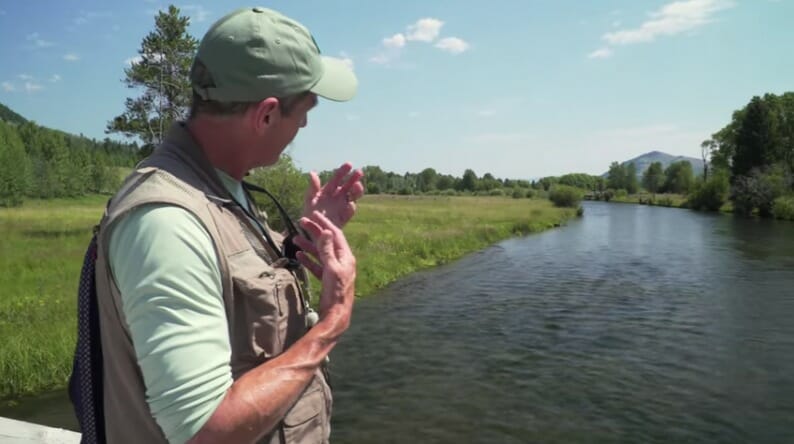Reading the water is an acquired skill. It’s an ability that’s honed over time, and one that takes into account not only a river’s physical characteristics, but how certain stretches might fish at certain times of the year … or even certain times of the day.
Above, RIO’s Simon Gawesworth helps shorten the learning curve, taking a specific stretch of water and breaking it down into digestible “sections” that give anglers an idea about where fish might be holding, what they might be eating and how to fish each section independently from the others.
Notice how he takes into account the current (the food delivery system), water depth and prospective cover, including in-stream boulders and even a foam line where fish might be holding. More cover and more depth equals more fish, and, likely, bigger fish.
Viewed through the eyes of a new angler, it might seem a bit intimidating. But by taking bigger water and approaching it in sections, even beginning anglers can determine where fish are holding. With that in mind, they can then craft a strategy to fish each section differently.



